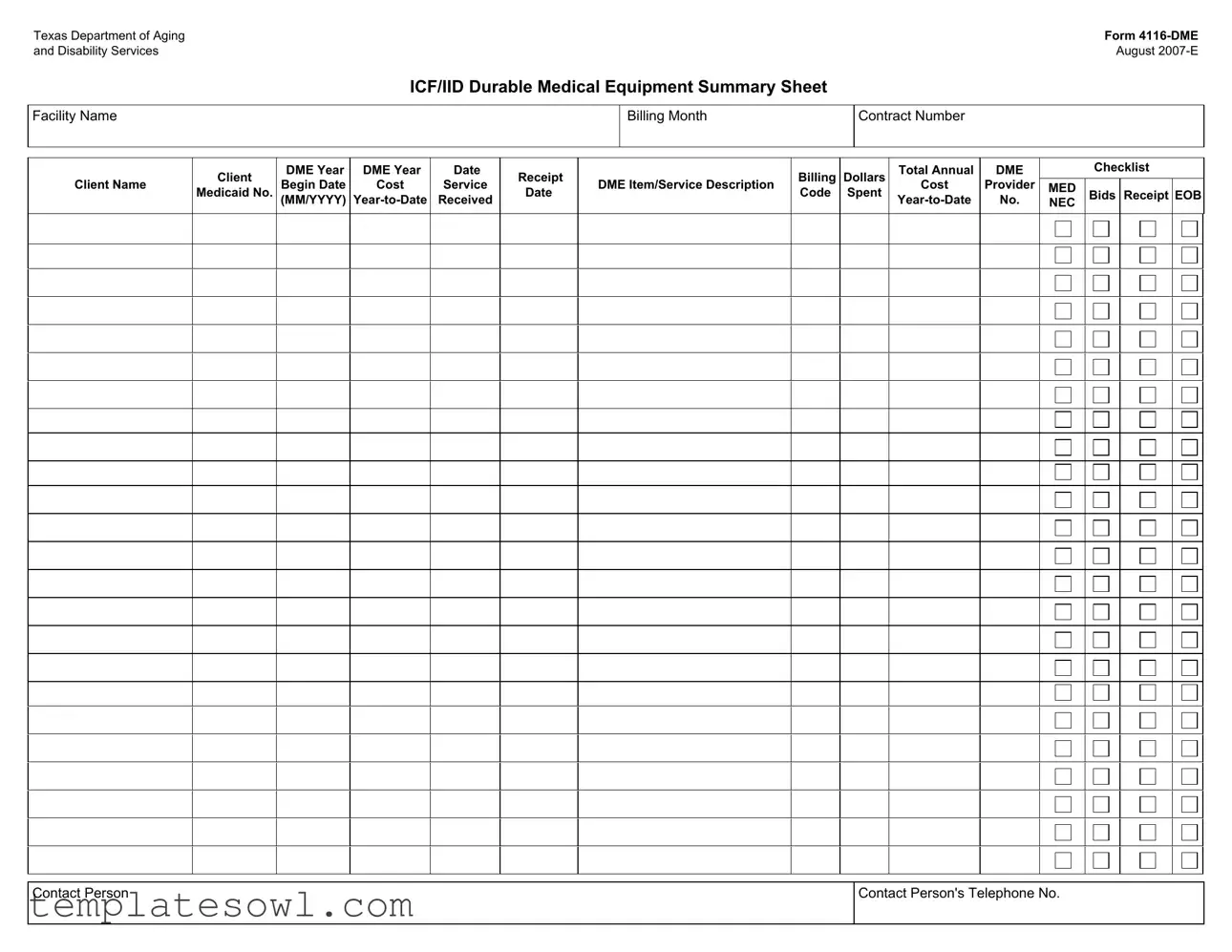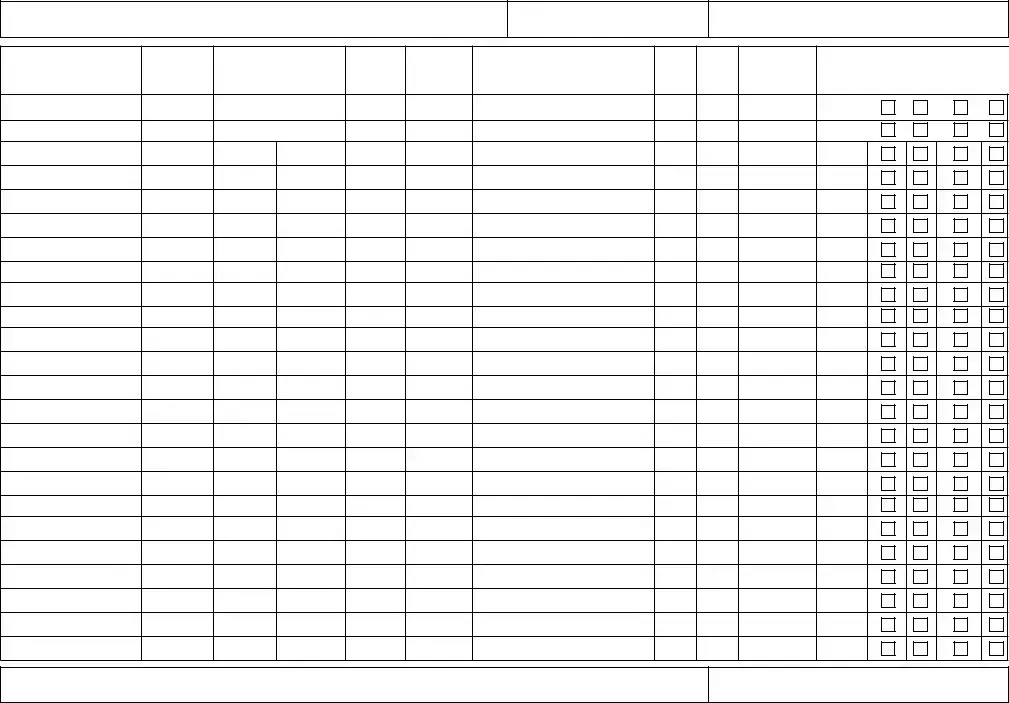What is the 4116 DME form used for?
The 4116 DME form is a summary sheet specifically designed for Durable Medical Equipment (DME) billing within the Texas Department of Aging and Disability Services. It serves to itemize medical equipment and related services provided to clients in residential facilities. This form is essential for ensuring that all relevant billing information is compiled accurately, facilitating smooth processing of claims and reimbursement through Medicaid.
What information is required to complete the 4116 DME form?
To complete the 4116 DME form, several key pieces of information must be provided. You will need to indicate the facility name, billing month, and contract number. Client details, including their name and Medicaid number, are also crucial. The form requires the DME year, the begin date of that year, and a breakdown of costs related to equipment and services. You must include details about each item, such as the description, billing dollars, and the total annual cost. Additionally, documentation such as receipts, EOB (Explanation of Benefits) numbers, and any necessary checklists must be gathered.
Is there a specific format for submitting the 4116 DME form?
The 4116 DME form must be filled out in a clear and detailed manner to ensure accuracy. Although the form itself provides structured fields for information, it is important to avoid leaving any sections incomplete. Once completed, this form can typically be submitted via mail or electronically, depending on the specific requirements of the Medicaid program. It is advisable to check with the relevant authorities on their preferred submission method to ensure compliance and timely processing.
Who is responsible for completing the 4116 DME form?
The responsibility of completing the 4116 DME form generally lies with the authorized personnel at the facility providing care to the client. This could include administrative staff, billing specialists, or healthcare providers who are familiar with the client’s needs and the medical equipment used. Ensuring accurate and timely completion of the form is a collaborative effort involving various individuals in the facility
What should I do if I make a mistake on the 4116 DME form?
If an error is identified after submitting the 4116 DME form, it is crucial to rectify that mistake as soon as possible. Depending on the type of error, you might need to submit a correction or an amendment form, if available. Always keep records of all communications regarding any amendments. If unclear about the process, contacting the Medicaid office for guidance is advisable, as they can provide specific directions for addressing and correcting errors.

